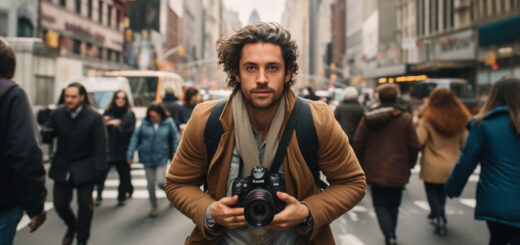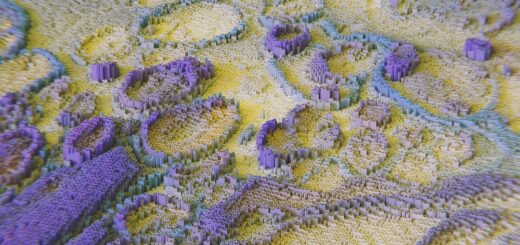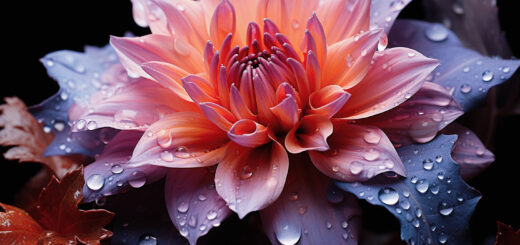The Beauty of Motion Blur: Tips and Techniques for Creating Dynamic Images
When it comes to photography, capturing a moment frozen in time can be both beautiful and powerful. However, there are times when you want to convey a sense of movement and dynamism in your images. This is where motion blur comes into play.
Motion blur is a technique that allows photographers to intentionally blur certain elements of an image, giving the impression of motion. Whether it’s capturing a cyclist whizzing by, a waterfall flowing gracefully, or a dancer in mid-twirl, motion blur can add a sense of energy and excitement to your photographs.
In this article, we will explore the definition of motion blur in photography, the various methods to achieve it, and its applications across different genres. We will also discuss the advantages of incorporating motion blur into your photographs, allowing you to create visually captivating and dynamic images. So, let’s dive in and discover the beauty of motion blur in photography!
Definition of Motion Blur in Photography
Motion blur in photography is a technique used to capture the movement of a subject by utilizing a slow shutter speed. By intentionally blurring the motion in an image, photographers can create a sense of dynamism, action, and movement. This effect can add a unique and captivating element to still photographs, bringing them to life and evoking a feeling of energy.
Key Points:
- Motion blur is achieved by deliberately setting a slow shutter speed, allowing the camera’s sensor to capture the movement of the subject over a longer duration.
- This technique can be used in various genres of photography, including sports, street photography, and even artistic or experimental photography.
- Motion blur can be controlled and manipulated to convey different levels of movement and blur intensity, depending on the desired effect.
- It is important to note that motion blur is different from camera shake blur, which occurs when the camera moves during the exposure.
Why Use Motion Blur in Photography:
- Convey Action: Motion blur can help convey the sense of movement and action in a photograph, capturing the dynamic nature of a subject.
- Add Drama: By blurring the motion, photographers can create a dramatic effect, making the image more visually interesting and engaging.
- Emphasize Speed: In sports and action photography, motion blur can accentuate the speed and athleticism of the subjects, adding an extra layer of excitement to the image.
- Tell a Story: Motion blur can tell a story in a single frame by showcasing the progression of an action or illustrating the passage of time.
- Create Abstract Art: Motion blur can be used creatively to produce abstract and artistic images, where the emphasis is on the movement itself rather than the subject.
For more tips and techniques on capturing motion in photography, check out this comprehensive guide.
Methods to Achieve Motion Blur
Motion blur is a powerful technique that can add a sense of movement and dynamism to your photographs. It’s especially useful when shooting sports, action, or any scene that involves movement. In this article, we’ll explore three different methods you can use to achieve motion blur in your photos. Whether you’re a beginner photographer or an experienced pro, these techniques are worth trying out to add an extra creative touch to your images. So grab your camera, and let’s dive in!
Panning
Panning is a technique where you track a moving subject with your camera while taking the shot. The result is a sharp subject against a blurred background, creating a sense of speed and motion. Here’s how you can do it:
- Select a relatively slower shutter speed (around 1/30th to 1/15th of a second) to capture the movement.
- As the subject moves, follow it with your camera by rotating your upper body or using the tripod’s panning feature.
- Keep your camera settings in mind. You may need to adjust the ISO and aperture to get a correctly exposed image.
Panning can take some practice to master, but it can yield incredible results once you get the hang of it. The key is to keep your subject in sharp focus while blurring the background, creating a captivating image that captures the essence of motion.
Slow Sync Flash
Another technique to achieve motion blur is by using slow sync flash. This method combines the use of flash and a slower shutter speed to capture both the subject and its movement. Here’s how you can do it:
- Set your camera to slow sync flash mode, which allows for a slower shutter speed.
- When you press the shutter button, the flash will fire at the beginning or end of the exposure, freezing the subject, while the slow shutter speed captures the movement.
- Experiment with different shutter speeds and flash settings to find the perfect balance between freezing the subject and capturing motion blur.
Slow sync flash is particularly effective when photographing subjects that have both static and moving elements. It can create a beautiful juxtaposition between the frozen subject and the blurred background, resulting in a visually striking image.
Using a Slower Shutter Speed
Lastly, you can simply use a slower shutter speed to achieve motion blur. This technique works best when you want to capture the overall sense of movement in a scene rather than freezing a specific subject. Here’s how to do it:
- Switch your camera to shutter priority mode or manual mode to have control over the shutter speed.
- Choose a slower shutter speed, such as 1/15th of a second or slower, depending on the desired effect.
- Use a tripod or stabilize your camera to avoid camera shake.
By using a slower shutter speed, you allow the camera to capture the movement over a longer period, resulting in a blur effect. This technique can be used to convey a sense of energy and liveliness in scenes like rushing water, moving clouds, or a bustling cityscape.
So there you have it! Three methods you can use to achieve motion blur in your photographs. Experiment with these techniques and let your creativity run wild. Remember, practice makes perfect, so don’t be discouraged if your first attempts don’t turn out exactly how you envisioned. Keep refining your skills, and you’ll soon be capturing stunning images with captivating motion blur effects. Happy shooting!
Applications of Motion Blur
Motion blur photography can be applied to various subjects, bringing a sense of dynamism and energy to still images. In this section, we will explore some of the exciting applications of motion blur in photography.
Sports Events
Capturing sports events with motion blur can create incredibly dynamic and eye-catching images. The blur adds a sense of speed and action, immersing the viewer in the intensity of the game. Whether it’s a sprinter dashing across the finish line, a tennis player swinging their racket, or a basketball player going for a layup, motion blur can help convey the thrilling atmosphere of these events. To freeze fast-moving subjects while still achieving motion blur, photographers can experiment with different shutter speeds and panning techniques.
Pro tip: For more tips and techniques on freezing fast-moving subjects in action photography, check out The Art of Action Photography.
Moving Vehicles
Motion blur is often used to capture the movement of vehicles, such as cars, trains, or bicycles. By allowing a longer exposure time, photographers can create streaks of light or blurred wheels, emphasizing the speed and motion of the vehicle. This technique can be particularly effective when shooting in low-light conditions or at night, as the vibrant trails of light can add a captivating and cinematic feel to the image.
Animals in Motion
Photographing animals in motion can be challenging but rewarding. Motion blur can help accentuate the graceful movement of animals, whether it’s a bird in flight, a galloping horse, or a playful dog running through a field. By using a slower shutter speed and panning with the subject, photographers can capture the fluidity and energy of these moments. The resulting images evoke a sense of liveliness and excitement, showcasing the beauty of animals in their natural environment.
Everyday Objects
Motion blur is not limited to capturing fast-moving subjects; it can also be used creatively with everyday objects. By deliberately introducing blur to objects like falling waterdrops or twirling umbrellas, photographers can transform ordinary scenes into visually striking images. This technique adds a touch of artistic flair, as the blurred motion adds a sense of mystery and intrigue to otherwise static subjects.
In conclusion, motion blur in photography has a wide range of applications, from sports events to moving vehicles, animals in motion, and even everyday objects. By harnessing the power of blur, photographers can elevate their images, adding depth, energy, and a sense of urgency to the captured moments. So, whether you are aiming to freeze fast-paced action or create a dreamy and ethereal effect, motion blur is definitely a technique worth exploring.
Advantages of Motion Blur Photography
Motion blur photography is a technique that captures the movement of a subject by intentionally blurring it while keeping the background in focus. This unique style of photography can add a sense of dynamism and creativity to your images. In this section, we will explore two key advantages of motion blur photography: separating the subject from the background and adding visual interest.
Separating Subject from Background
One of the main advantages of motion blur photography is its ability to separate the subject from the background. By intentionally blurring the subject, you can create a striking contrast between the moving element and the stationary environment. This separation helps draw attention to the subject and creates a sense of depth in the image.
When you freeze the action and capture a sharp subject, it can sometimes blend too much into the background. However, with motion blur, you can achieve a clear distinction between the subject and its surroundings. This technique works particularly well when you have a busy or distracting background that you want to downplay.
Adding Visual Interest
Motion blur photography also offers the benefit of adding visual interest to your images. By capturing the movement of a subject, you can convey a sense of energy, speed, or even stillness in a dynamic way. This creates a visually appealing image that captures the viewer’s attention and evokes emotions.
Whether it’s the graceful movement of a dancer, the swoosh of a speeding car, or the flowing water of a waterfall, motion blur photography allows you to freeze a moment of action while conveying a feeling of motion. This can result in visually stunning and captivating photographs that leave a lasting impression.
To achieve motion blur, you can experiment with different shutter speeds. Slower shutter speeds, such as 1/30th of a second or slower, are commonly used to create the desired blur effect. Additionally, using a tripod or stabilizing your camera can help maintain sharpness in the background while capturing the motion of your subject.
Incorporating motion blur photography into your repertoire can add a unique and artistic touch to your work. By separating the subject from the background and adding visual interest, you can create impactful and memorable images. So, don’t be afraid to experiment with this technique and let your creativity take flight!
Conclusion
In conclusion, motion blur is an incredibly versatile technique that can bring a dynamic and visually interesting element to your photographs. Whether you’re capturing a moving subject or adding a sense of speed and motion to a still scene, motion blur can help you create compelling images that stand out. By experimenting with different methods such as panning, slow sync flash, and slower shutter speeds, you can unlock a whole new level of creativity in your photography. So go ahead, give motion blur a try and explore the endless possibilities it offers for capturing the beauty of movement. And for more photography tips, tutorials, and inspiration, be sure to visit Wim Arys Photography at wimarys.com. Happy shooting!
Frequently Asked Questions
- What is motion blur in photography?
Motion blur in photography refers to the intentional blurring of moving subjects or backgrounds to convey a sense of motion or dynamic energy in the image. It is achieved by using slow shutter speeds while capturing a moving subject.
- How can motion blur enhance my photographs?
Motion blur can add a sense of movement, drama, and energy to your photographs. It can help create dynamic and visually interesting images, especially when photographing sports, vehicles, or any subject with movement.
- What are some techniques for capturing motion blur?
There are several techniques to capture motion blur: 1. Use a slow shutter speed, 2. Pan the camera with the moving subject, 3. Utilize long exposure photography, 4. Combine multiple exposures in post-processing, and 5. Experiment with zoom blur or intentional camera movement.
- What settings should I use to achieve motion blur?
To achieve motion blur, you need to use a slow shutter speed. The exact settings will depend on the speed of the subject and the desired amount of blur. Experiment with shutter speeds between 1/15th of a second to several seconds and adjust accordingly.
- Are there any tips for getting sharp subjects within the motion blur?
To ensure sharp subjects within the motion blur, you can use techniques like panning, where you track the moving subject with the camera, or using a tripod for stability. Additionally, you can also try using a flash or capturing multiple images with different focus points and stacking them in post-processing.



